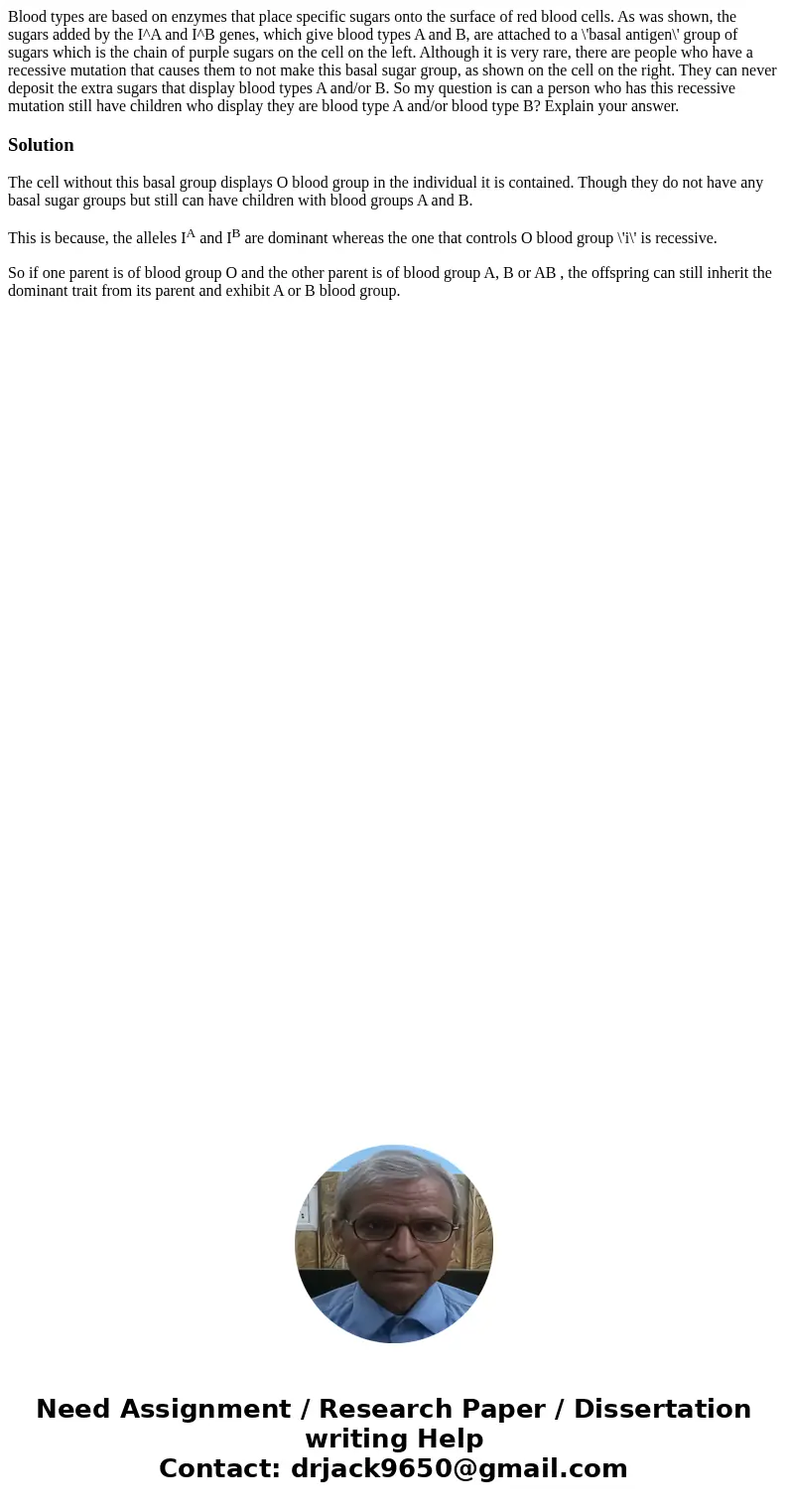Blood types are based on enzymes that place specific sugars
Blood types are based on enzymes that place specific sugars onto the surface of red blood cells. As was shown, the sugars added by the I^A and I^B genes, which give blood types A and B, are attached to a \'basal antigen\' group of sugars which is the chain of purple sugars on the cell on the left. Although it is very rare, there are people who have a recessive mutation that causes them to not make this basal sugar group, as shown on the cell on the right. They can never deposit the extra sugars that display blood types A and/or B. So my question is can a person who has this recessive mutation still have children who display they are blood type A and/or blood type B? Explain your answer. 
Solution
The cell without this basal group displays O blood group in the individual it is contained. Though they do not have any basal sugar groups but still can have children with blood groups A and B.
This is because, the alleles IA and IB are dominant whereas the one that controls O blood group \'i\' is recessive.
So if one parent is of blood group O and the other parent is of blood group A, B or AB , the offspring can still inherit the dominant trait from its parent and exhibit A or B blood group.

 Homework Sourse
Homework Sourse